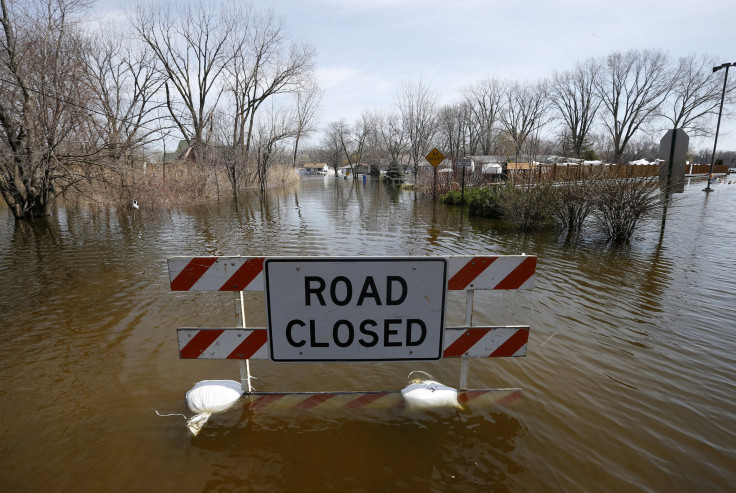Flood Warnings Around The Country As Cincinnati Prepares For Ohio River To Rise To Highest Level In Decades

Weather services issued multiple alerts Saturday for Cincinnati and several other Midwest cities Saturday as the Ohio River rose toward its highest level in nearly two decades. Rains could push the river just a few feet short of the levels seen in the 1997 flood that marked one the river’s most severe on record. Local communities have evacuated residents from high-risk areas.
The Ohio River Forecast Center predicts the river could crest at 58 feet -- six feet above minimum flood levels -- by Sunday, according to local reports. The river reached 64 feet in 1997, marking one of the most serious floods the area had seen in decades. The 1997 flood resulted in power cuts for thousands of Ohioans and an estimated $180 million in damage, the U.S. Geological Survey reported.
This weekend’s water rise would affect communities in Ohio, as well as towns in Kentucky and Indiana. Public roads and businesses in Cincinnati and other affected cities nearby closed Saturday as a result of the warnings.
The National Weather Service issued additional flood warnings for smaller waterways in Ohio, including the Scioto, Sandusky, Cuyahoga and Muskingum rivers, and urged residents not to drive vehicles through flooded areas.
Local news outlets and area observers posted photos of some of the flooding that has already been reported near the Ohio River:
Flooding hits Vermilion, Flood warning: Cuyahoga River in Independence, http://t.co/UHXshfmfTT pic.twitter.com/oUMD0942zS
— fox8news (@fox8news) March 14, 2015@beJULEd8 Panoramic shot of Ohio River flooding. 25 miles east of Cinti. pic.twitter.com/cByjtpiMKp
— Kimberly (@Predec2) March 14, 2015Mariemont's South 80 trail completely underwater and river still rising... http://t.co/rpdwcNAP3t @Enquirer #cincywx pic.twitter.com/72GptUZbc5
— Henry Molski (@HankMolski) March 14, 2015The National Weather Service also kept a flood warning in effect for some areas near the Mississippi River Saturday, including Memphis, Tennessee, and Baton Rouge, Louisiana. Flooding in those areas is expected to be minor, according to the warnings, but local weather reports predicted the river could continue rising during the next week.
Flood watches also remained in place for the weekend for some northeast states, including western New York and Pennsylvania, lasting until Saturday evening.
The 2014 National Climate Assessment reported the American Midwest would face more stark risks of flooding and downpours due to climate change. Precipitation in Midwestern states will increase by 10-20 percent by the end of the century, the study said.
© Copyright IBTimes 2024. All rights reserved.












